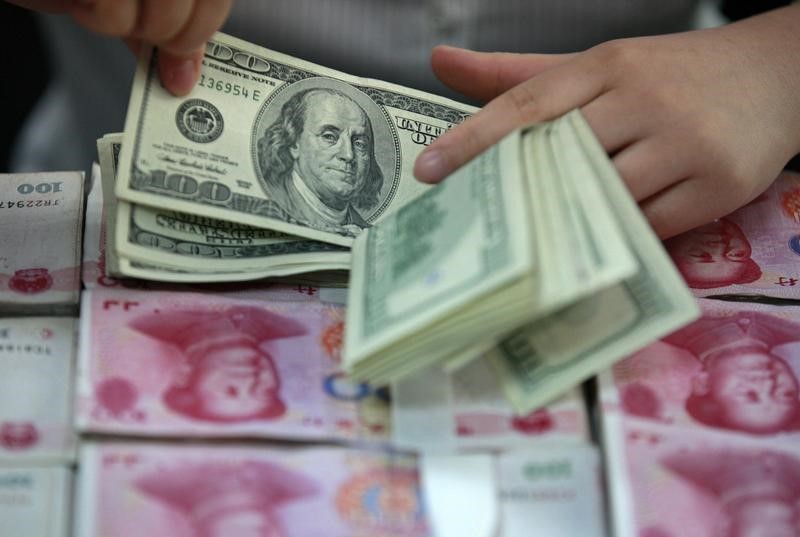Investing.com — Most Asian currencies steadied on Wednesday as markets hunkered down ahead of more cues on monetary policy from the Federal Reserve, while the Australian dollar sank tracking softer-than-expected inflation data.
The U.S. dollar rose slightly in Asian trade, with the and adding 0.1% each after logging overnight losses. Stronger-than-expected U.S. economic data pushed up some appetite for risk-driven assets, weighing on the dollar’s safe haven appeal.
But improving risk appetite offered little support to Asian currencies, given that markets are still pricing in at least two more rate hikes by the Federal Reserve this year. Anticipation of an , at a European Central Bank forum later in the day, also kept sentiment subdued.
The rate-sensitive sank 0.5%, while the steadied at a near seven-month low of 143.94 to the dollar.
Markets were also watching for any potential intervention by the Japanese government to support the yen, following verbal warnings from several ministers on recent weakness in the currency. Analysts expect the government to step in after the yen crosses 145.
shed 0.1%, trading near a six-month low after data pointed to a sustained decline in the country’s . Focus this week is also on from China, due on Friday.
Australian dollar slides as CPI eases in May
The was the worst performer in Asia on Wednesday, losing 0.6% after data showed that inflation grew less than expected in May.
The reading eases some pressure on the to keep hiking rates, after the RBA shocked markets with two back-to-back hikes through May and June. Analysts now see a limited scope for another hike when the RBA meets next week.
But while overall CPI inflation eased in May, core inflation – which disregards volatile fuel and fresh food prices – still remained high.
The Australian economy is also expected to cool in the coming days, as it grapples with high inflation levels.
Powell speech, U.S. rate hikes dominate sentiment
Powell is expected to offer up more cues on monetary policy at the ECB forum later in the day. The Fed chair had largely retained his hawkish stance during a two-day testimony before Congress last week, forecasting at least two more rate hikes by the Fed this year.
Markets are now the Fed will raise rates by 25 basis points in July – a scenario that bodes poorly for Asian currencies.
Read the full article here
